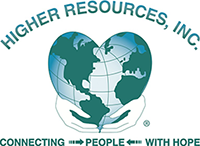|
|
|

Foundation, reminding you that a fully-integrated approach for assisting survivors of
traumatic loss involves a balance of head and heart. Wednesday Wisdom is written
and copyrighted by Carolyn V. Coarsey, Ph.D. and distributed by the Family
Assistance Education & Research Foundation Inc., fafonline.org. Reprint is available
with written permission from the Foundation.
It Takes a Team to Properly Assist Survivors

The original design of the Care Team model specified a minimum of two people
to provide face-to-face assistance to each survivor or family following a traumatic
event. Many organizations have reduced the ‘team’ concept to one Care Team
member per family. We believe this to be an error based on decades of
successfully using HSR™ at the Foundation. That experience, plus our ongoing
research with those involved in such tragedies, has validated the need for a team,
both for the survivor or family’s sake and that of the Care Team.
While there are numerous reasons to assign at least two responders per survivor
or family unit, we will address the three primary ones here. First is simply the
need for two people to efficiently handle the multitude of tasks usually involved in
supporting people; then there is the need for ongoing support for anyone involved
in the highly emotional and stressful work of serving in this role. And while it
has seldom been an issue, having two team members provides a built-in system
for ensuring consistency of services offered along with protection of the team
members’ and company’s best interests.
In the first instance, best practice has shown that survivors and families often have
multiple needs, especially in the first few days. The workload may require team
members to split the duties in order to accomplish some of the tasks promptly.
At other times, it may be better for them to work side-by-side to get more
accomplished. Experience shows that the acute phase of crisis response is when the
Care Team is busiest, and obviously two or more people can simply get more done in
a shorter span of time.
Experience also shows the benefit for responders to have another person to share
the physical and emotional toll, particularly when important decisions must be made
on the spot. The challenge then becomes how best to support team members who
are performing needed, but non-routine and challenging, tasks such as sitting with
families whose loved ones have been injured or in some cases, killed. Foundation
experience shows that having two employees working together is the best way
to shoulder this type of stress daily—having someone there to talk to is invaluable,
especially when that person has the context of sharing the same experience.
Finally, the third reason must be considered in that such a situation has arisen
more than once: ensuring that two people are ensuring consistency of service
and can verify such if necessary. For example, following an aviation disaster,
litigation occurred around a discrepancy over who was the legal primary next-of-kin
for a deceased passenger. One of the family members felt that she was not treated
equally by the airline as compared to the other person claiming to be the legal
next of kin. Having two team members available to describe and corroborate
what was offered to the individual claiming unequal treatment proved to be
invaluable in the court case.

“Investments made in emergency response paid for themselves both as a
pure business proposition, as well as just a moral and compassionate
thing to do…I can tell you that an ounce of prevention is worth a ton and
half of cure.”
– Swissair 111 Family Member who is an attorney
and media communications specialist
Leaders responsible for an organization’s response must plan for enough
responders to ensure that a team of at least two people can be assigned to
assist each survivor or family unit. As described above, experience shows this
to be essential for best support of the survivor(s), the families of those lost,
employees, and the company in the aftermath of a tragedy.
© 2017 Higher Resources, Inc./Aviem International, Inc.
![]()
|
Click to view this email in a browser
If you no longer wish to receive these emails, please reply to this message with “Unsubscribe” in the subject line or simply click on the following link: Unsubscribe |
|
Aviem & Family Assistance Foundation 555 North Point Center East, Suite 400 Alpharetta, GA 30022 USA Read the VerticalResponse marketing policy. |

|
